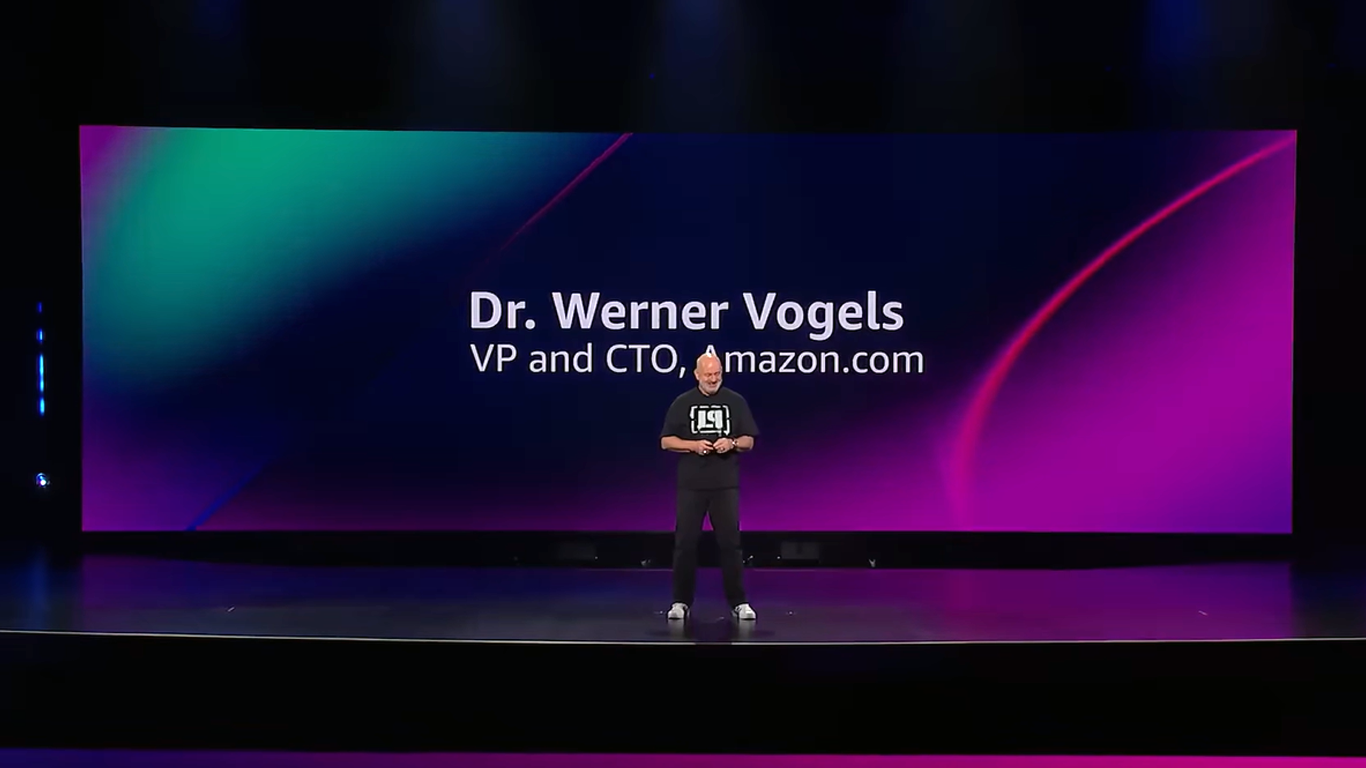Lessons from Werner Vogels’ Keynote at AWS re: Invent 2024
January 23, 2025

Andrew McKay
Director of Marketing

“You never step in the same river twice,” Heraclitus wrote.
At AWS re: Invent 2024, Werner Vogels reminded us how these ancient truths guide modern technology: complexity grows, but it can be managed through intentional simplicity. His keynote, spanning philosophy, organizational dynamics, and technical innovation, delivered a masterclass in understanding and addressing the challenges of distributed systems.
Let’s unpack the lessons and what they mean for enterprises navigating today’s IT landscape.
The Two Faces of Complexity
The key is to embrace complexity as a natural state while designing systems to handle it efficiently.
As Vogels articulated, managing complexity isn’t about eliminating it—it’s about shifting it to where it can be controlled. This concept, the “conservation of complexity,” finds parallels in IT systems: user-facing simplicity is achieved by carefully managing intricate back-end architectures. We see this dynamic in action every day. Enterprises aim for seamless, user-friendly interfaces while leveraging complex, scalable infrastructures.
But not all complexity is created equal. Vogels’ keynote drew a clear distinction between intentional and unintentional complexity. Intentional complexity allows systems to evolve and scale, introducing flexibility without sacrificing resilience. Unintentional complexity, however, emerges from oversight or poorly integrated systems, creating fragility.
Our role often involves identifying and mitigating unintentional complexity. For example, when modernizing legacy workloads or optimizing multi-cloud environments, we focus on eliminating the hidden pitfalls that turn opportunities into risks, enabling organizations to thrive in the face of complexity.
Lessons in System Design
At re:Invent, Vogels offered insights into managing complexity that reflect more than two decades of leading the design and evolution of AWS’s global infrastructure—a perspective shaped by unparalleled experience at the forefront of cloud innovation. These lessons resonate deeply with enterprises striving to balance agility and stability:
- Make evolvability a requirement. Systems must be built to adapt and grow without breaking their foundation. Without evolvability, systems stagnate, unable to meet the demands of growth and change.
- Break complexity into pieces. Modularity prevents cascading failures, allowing systems to scale and adapt independently. Smaller building blocks help isolate challenges, making even large-scale systems easier to manage and iterate upon.
- Organize into cells. Just as cells in living organisms isolate damage to protect the whole, systems can be designed with independent components that contain failures. This structure ensures that disruptions remain localized, preventing widespread impact. By mirroring this biological resilience, systems become easier to scale, adapt, and maintain in dynamic environments, fostering both stability and flexibility.
- Design predictable systems. Patterns like constant work create consistency under fluctuating conditions. Predictable systems help mitigate uncertainty, a key factor in managing complexity at scale.
- Automate complexity wherever possible. Removing repetitive manual processes not only minimizes errors but also frees teams to focus on innovation. Automation becomes the backbone of scalable, resilient systems.
- Leverage time as a foundation for simplicity. Synchronized clocks enable precise coordination, reimagining distributed systems’ efficiency and reliability. Time is no longer just a utility—it’s a building block for reducing operational overhead at scale.
These principles remind us that complexity isn’t inherently chaotic—it’s a challenge to be met with thoughtful design. By embedding these lessons into their strategies, organizations can transform intricate systems into opportunities for innovation and resilience.
Aurora DSQL and Time as a Foundational Building Block
Aurora DSQL, announced at AWS re:Invent 2024, showcases how precise time synchronization is transforming distributed systems. As a globally distributed database, it addresses longstanding challenges like distributed transactions and conflict resolution. Powered by synchronized clocks with microsecond precision, Aurora DSQL eliminates the need for traditional algorithms like Paxos or two-phase commit, simplifying operations while improving efficiency and reducing complexity.
This new AWS service isn’t just a technical milestone—it’s a demonstration of how foundational principles like time synchronization can streamline architectures and enable innovation. Aurora DSQL supports optimized data placement, seamless failover, and low-latency performance, making it invaluable for enterprises managing hybrid or globally distributed workloads.
Time synchronization, once a quiet enabler of distributed systems, is now emerging as a transformative force. Aurora DSQL illustrates how clarity and simplicity can arise from complexity, offering organizations a path to design systems that are not only efficient and scalable but also resilient in the face of growing demands.
Designing Your Teams like Systems
Technical principles often reflect organizational behavior, and Vogels’ keynote underscored this connection. Smaller, autonomous groups, structured to operate with minimal dependencies, enable rapid decision-making and reduce bottlenecks.
These teams mirror microservices in their modularity and independence, ensuring agility and adaptability. By organizing teams to function like modular, scalable systems, enterprises foster innovation incrementally, ensuring steady and sustainable progress. This alignment of technical and organizational strategies allows organizations to tackle complex challenges while fostering creativity and innovation.
Complexity is an Opportunity
Plan for failure, and nothing will fail.
Complexity is not a burden to endure but a catalyst for growth, when approached with discipline and intention. By adopting more adaptive, modular, and resilient ways of thinking about your IT infrastructure, organizations can transform tangled systems into frameworks of opportunity. These are not just strategies for today—they are the basis for resilient, forward-thinking enterprises capable of thriving in a future of rapid technological advancement and uncertainty.
Complexity challenges us to confront uncertainty and make deliberate choices. It’s in those choices—moments of grappling with chaos—that innovation takes root. By treating complexity as a design principle rather than a hurdle, we align our systems, teams, and strategies with the possibility of meaningful progress. The future isn’t built by avoiding complexity but by learning to harness it—shaping it into something purposeful, adaptable, and enduring.


